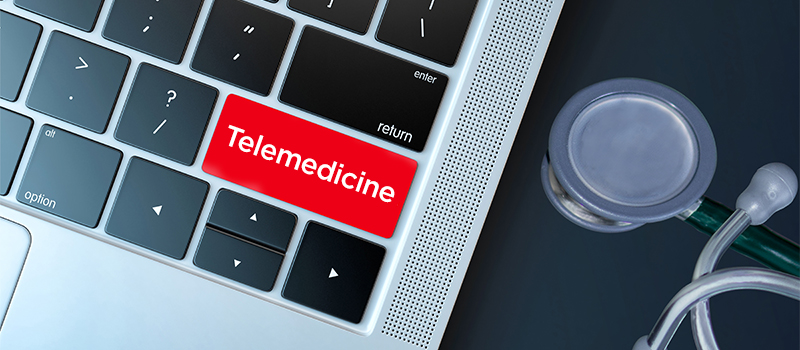
Telemedicine in Pediatric Practice: Navigating Benefits and Challenges
In recent years, telemedicine has emerged as a transformative force in healthcare, revolutionizing the way medical services are delivered and received. This technological evolution has significantly impacted pediatric practice, offering a spectrum of benefits while presenting unique challenges that require thoughtful consideration. Technological developments, legal frameworks, and healthcare delivery models are always striving to optimize telemedicine in pediatric practice to improve child accessibility and quality of care, despite several advantages and disadvantages.
Understanding the benefits and challenges, or the pros and cons, of telemedicine in pediatric practice is essential for healthcare providers, parents, and policymakers as they navigate the evolving landscape of virtual pediatric care. In navigating the benefits and challenges of telemedicine in pediatric practice, a balanced approach is essential. Addressing technological disparities, ensuring privacy and security, and maintaining a complementary balance with in-person care are crucial considerations. In this article, we’ll read about the benefits and challenges of telemedicine in pediatric practice in detail.
Benefits of Telemedicine in Pediatric Practice
Geographical Accessibility
Telemedicine allows children in rural or remote areas to access pediatric care without the need to travel long distances. Telemedicine breaks down geographic barriers, ensuring that children, regardless of their location, have access to quality pediatric care. This is especially important in underdeveloped or rural areas where pediatricians are scarce and might cause delays or deficiencies in healthcare. Pediatricians can reach a wider audience by using telemedicine to consult and provide medical advice from a distance.
Remote Monitoring and Timely Consultation
Parents don’t have to wait for long for appointments to seek medical advice for their kids. Remote monitoring of children is made possible by telemedicine, which facilitates proactive management and lessens the need for frequent in-person visits. A child’s progress can be tracked by pediatricians, who can easily modify treatment programs as necessary. In the management of chronic pediatric illnesses, telemedicine is essential. In order to make better decisions, healthcare professionals can track a child’s health parameters and child development in real-time by using remote monitoring systems. Remote monitoring of children is made possible by telemedicine, which facilitates proactive management and lessens the need for frequent in-person visits.
Convenience for family and patients
Travel time has decreased, and flexibility has increased as a result of telemedicine practice. By reducing the need to go to healthcare facilities, families can save money and time. Working parents find it easier to schedule appointments without compromising the child’s health. Families benefit greatly from telemedicine’s convenience, particularly those with hectic schedules or little money. Especially after the child’s birth, a lot of questions arise in the minds of parents regarding early childhood development, which can easily be answered by a pediatrician during an online consultation.
Preventive Care and Education
Healthcare professionals can advise parents on preventive care and provide information on child health and wellness through telemedicine. Early detection and intervention for behavioral or developmental difficulties might be facilitated by prompt virtual consultations. Enhancing preventive treatment and health education is one of the main benefits of telemedicine in pediatric practice. Through virtual consultations, pediatricians can advise parents on immunizations, diet, and general child wellness. In addition to encouraging better lifestyles and the early identification of possible problems, this proactive approach gives parents the power to make decisions regarding their child’s well-being.
Reduced Exposure to Infections
Infection risk is reduced with the use of telemedicine, particularly in the event of pandemics or disease outbreaks. It is crucial to limit exposure to pathogens, especially during health emergencies. In this sense, telemedicine plays a vital role in facilitating remote consultations. Telemedicine supports public health initiatives by minimizing the need for in-person visits to medical facilities, protecting both patients and healthcare professionals. In pandemics and outbreaks, telemedicine reduces the need for in-person hospital visits, thereby limiting the number of people exposed to illnesses.
Efficient Use of Resources
Telemedicine makes the most of healthcare resources, enabling pediatricians to better manage their time and potentially reducing wait times for appointments. With the increasing technology, all three main telemedicine components, be it teleconsultation, telementoring, and telemonitoring, are flourishing. Telemedicine resources also offer opportunities for better communication and collaboration between pediatricians and other specialists for the enhanced treatment of patients to achieve developmental milestones.
Enhanced Follow-Up Care
Pediatricians can more easily take follow-up consultations through virtual visits, guaranteeing continuity of care and tracking development. Another noteworthy advantage is the efficiency of follow-up care. Telemedicine can frequently be used to carry out routine examinations, medication management, and chronic illness monitoring efficiently. In addition to saving time for families and healthcare professionals, this also reduces the chance of infection exposure, which is crucial given current global health issues like the COVID-19 pandemic. Telemedicine thus positively affects a child’s growth and development, disease management, and other treatment modalities leading to enhanced follow-up care.
Challenges of Telemedicine in Pediatric Practice
Technology Barriers
Undoubtedly, one of the biggest obstacles to telemedicine is limited access to reliable network connectivity, smartphones, and other communication methods. Some families might not have access to the required technology to engage in telemedicine appointments, such as smartphones or dependable internet. Despite the quick advancement of technology, not every family has equal access to the necessary pediatric healthcare tools. Access to healthcare can differ depending on one’s ability to use telepathic resources. To guarantee that telemedicine helps all socioeconomic groups, it is imperative to close this digital gap.
Lack of Physical Examination
A thorough physical examination might not be possible in remote consultations, which could make it more difficult to diagnose and schedule treatments. One of the main problems with telemedicine is that it does not include physical examinations, which are essential to pediatric diagnosis. Lack of competence to perform in-person examinations and developmental assessments may result in the overlooking of some medical disorders and subtleties. Maintaining a healthy balance between virtual consultations and sporadic in-person visits becomes essential to providing children with complete treatment. For several pediatric illnesses, the lack of physical inspections during virtual consultations may make it more difficult to accurately diagnose and plan treatments.
Privacy and Security Concerns
Although it can be difficult, it is essential to protect the confidentiality and privacy of pediatric health information when conducting virtual consultations. Concern over safeguarding patient data online is growing. Strong security requirements must be followed by telemedicine systems to protect sensitive pediatric health information and data. Ensuring privacy and confidentiality is a legal and ethical responsibility that calls for continuous improvements in secure telehealth infrastructure.
Communication Challenges
In virtual encounters, non-verbal cues—which are vital for figuring out a child’s condition—may be weakened. Healthcare Some parents could be less comfortable using telemedicine technology or properly communicating information about their child’s health. In pediatric treatment, effective communication is essential, and telemedicine creates additional communication difficulties. Healthcare professionals must come up with ways to get around these restrictions, such as using video calls to have more sophisticated conversations. For telemedicine to be used successfully, parents must feel at ease and be proficient in using digital platforms. To improve parental proficiency in telehealth encounters, pediatricians ought to think about providing assistance, materials, and training. Aspiring pediatricians can gain insights into telemedicine practices through the best online pediatrics courses.
Reimbursement and Regulation
The financial viability of pediatric practices may be impacted by difficulties with payment procedures for telemedicine services. Healthcare providers may face difficulties due to the constantly changing legislation and licensing requirements for telehealth services. The reimbursement policies in pediatric practice have a significant impact on the financial sustainability of telemedicine. To ensure that telemedicine efforts are sustained, policymakers and healthcare organizations must collaborate to create transparent policies and fair reimbursement schemes. Also, families in rural areas might not have proper knowledge about online payments or access to digital payment methods, making it difficult to consult a pediatrician online.
Emergency Situations
When an emergency calls for quick medical attention, telemedicine might not be the best option. Even though telemedicine works well for normal consultations, it might not be the best option in an emergency where prompt medical attention is needed. Clear procedures for recognizing emergencies during virtual visits and advising parents on when to seek urgent in-person care must be established by pediatric practices. Telemedicine might not be appropriate in situations where prompt physical intervention is needed.
Possibility of Overuse or Misuse
Parents may rely on virtual consultations for small concerns that could be handled in a different way if telemedicine is used excessively or inappropriately. Also, relying only on telephonic consultations can lead to communication barriers, which can have a bad impact on the health of the patient.
Technological Glitches and Professional Burnout
Poor internet connectivity or platform failures can cause virtual consultations to be disrupted, which can have an impact on the standard of service and patient experience. The rising demand for virtual consultations may cause burnout among healthcare professionals, which could have an impact on pediatricians’ general well-being.
Conclusion
To conclude, telemedicine in pediatrics has great potential to transform the way chronic illnesses are managed, increase access to healthcare, and improve preventative care. To reach its full potential, though, resolving issues with technology, privacy, communication, and legal frameworks is essential. Legislators, medical experts, and software developers must constantly collaborate to create a telemedicine environment that prioritizes the well-being of children and families. Future efforts to enhance and improve telemedicine practices in pediatric care will be crucial in determining how children’s healthcare is delivered, as long as technology and healthcare systems keep evolving. Even as we celebrate the advancements made in the first year of telemedicine integration into pediatric care, we must keep improving these standards for the sake of future generations.
Related post











